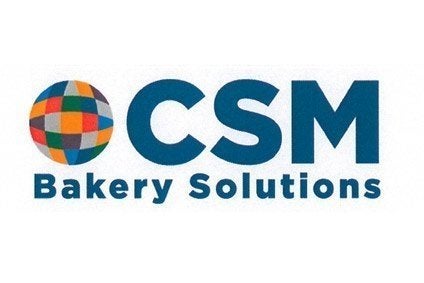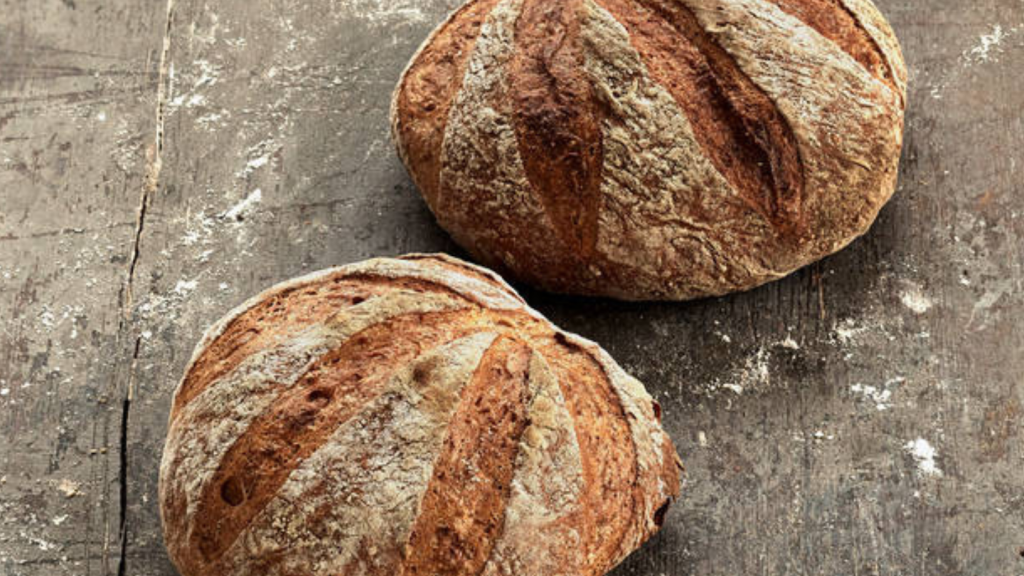
CSM Bakery Solutions came to life two years ago when Rhône Capital acquired the bakery supplies business of Dutch food and ingredients group CSM. At the time, Rhône Capital said it would invest in CSM's capacity to innovate and use its customer relationships to support global growth. Katy Askew spoke to CSM vice president of bakery products, Sebastian Siethoff, to find out more.
just-food: What are CSM's primary channels, customers and markets?
Sebastian Siethoff: We are marketing our products into four channels of trade. Modern trade – your grocery stores as well as in the US mass outlets such as Wal-Mart and Target – is a big piece of our volume. We are present in all facets of foodservice. We have top global chains, mid-tier chains and street business, so independent foodservice outlets globally. The heritage of our business comes from traditional trade in Europe, which is short for independent bakery outlets. We reach thousands and thousands of those around the world. We have a very strong and very developed route-to-market, which is something that our partners and our customers really value because we serve over 40,000 customers globally. Our fourth channel is what we call the industrial channel… selling products to B2B.
When you look at modern trade, we are present in most of the usual suspects. So your Tescos of the world… We are very developed in these accounts. We are doing business with Dunkin Donuts globally. We are actively involved with Starbucks. That business has been swinging back and forth a little for us but we are very much engaged with them. Other top chains are certainly on our roster. And in the US we work with the big food distribution businesses such as US Foods.
In terms of geographies, very simplistically our revenue is split roughly 50-50 between Europe and North America. We are very much centred on those regions. We do have an international business as well, which is growing fiercely but is relatively small still. We have a healthy presence in the Middle East and places like Turkey, the UAE. We have a bit of a footprint in China. We are globally in close to 100 – if not over 100 – countries.
See Also:
j-f: Are you more focused on growth in your established markets of Europe and North America or expanding into new markets to fuel expansion?
How well do you really know your competitors?
Access the most comprehensive Company Profiles on the market, powered by GlobalData. Save hours of research. Gain competitive edge.

Thank you!
Your download email will arrive shortly
Not ready to buy yet? Download a free sample
We are confident about the unique quality of our Company Profiles. However, we want you to make the most beneficial decision for your business, so we offer a free sample that you can download by submitting the below form
By GlobalDataSiethoff: We are looking to expand our share position within the bakery category [in core markets]. It is a very dynamic category that, at least in the US, is growing double digits. There is a migration of the consumer from the centre store, from CPG packaged goods, to the perimeter of the store to fresh goods such as bakery. We want to participate in that growth by expanding our share position. First and foremost for us, that means winning in our established markets and participating in the inflation of the category.
j-f: How do you plan to achieve market share growth ahead of the sector?
Siethoff: The market is really speeding up. Of course you want to grow faster than the market, especially with our footprint. We are not in that position yet. The way we are going to do that and ultimately achieve growth rates ahead of the market place is through more relevant and innovative products. And a very rigorous focus on first the consumer and then the customer, really understanding where they want to take the businesses and what the emerging consumer needs are. That is something we have put a lot of effort into. We have built up quite an intelligence base and we like to think that we are actually category leader in terms of being a true insight led bakery platform globally.
j-f: What are some of the key trends in today's bakery market? Clean labelling and ingredients?
Siethoff: [Clean ingredients is] a big lens that we apply to product development. The piece that is really key here is every retailer would enquire about clean ingredients and cleaner labels. But there are different benchmarks and different paradigms and different options out there. It is not really a fully grounded conversation yet globally in terms of what that ultimately means… Everyone knows that we need to react to it. We are taking a very composed and organised approached to it that will be very research based. Our bakery products portfolio is already very clean. We have already done a lot of work in that regard taking what you would call the bad stuff out. We are also finding in our upstream consumer insights work that [the use of ingredients like] sugar is something that we really need to look at. We are finding that sugar and sugar substitutes are becoming a challenge.
j-f: Artificial additives fly in the face of clean labelling trends but people are also concerned about sugar consumption. How do you answer these contradictory needs?
Siethoff: There are all kinds of trends that relate to sugar. There is a lot of insecurity out there. The consumer is pointing us towards natural sweet. That can be honey, molasses, things like that. That is really where we see the market going, or it is at least one area where the market will be going. Aspartame and high intensity sweeteners are not the future at all. The market is clearly going towards naturally sweet and that is where we are going to take our portfolio as well.
j-f: Are you also looking at growth areas like gluten-free in your product development?
Siethoff: We are looking at it. Our perception is that diets come and go and they also tend to be relatively niche. Although in the case of gluten free, there is certainly a windfall to mainstream. We are still holding out the verdict on whether this is a big wave to ride. It has certainly seen some expansion… but in a world where we are looking at a product that has mass appeal, it is on our radar but it is not top of our list.
j-f: Do you produce anything under licence or under brands, or is it purely own label in the retail channel?
Siethoff: We have a healthy set of licensing relationships globally. We are embarking on quite some activities in the licencing space because, again, we are finding there is a migration from the centre store to the perimeter. When the consumer then finds a well known and what they deem to be credible brand on top of a fresh product – because the other key consumer trend is that consumers are increasingly looking for fresher and cleaner ingredients and so forth… you are seen to be creating innovation in the eyes of the consumer. We are seeing that to be working quite a bit for us.
j-f: Can you detail the percentage of your business that is licensed?
Siethoff: It depends on what regions you are talking about. I don't have the exact percentage broken out. I can tell you it is still a relatively small part of our business. In Europe it is mostly centred on the UK. You will see things in store, such as [Mondelez International's] Milka muffins, Milka donuts. You will see things around the Nestle portfolio that we have. We have a long standing relationship with Fox and Simpsons donuts. And in the US we have very successfully embarked on a partnership with Hershey and we are looking to expand that further.
j-f: Would you consider developing or acquiring your own brands in addition to your licensing activities?
Siethoff: That is something that is on the radar but the jury is out. We are dabbling with it but we don't have a clear agenda yet. I have worked many years of my life in CPG industries where ten to 15 points of your P&L are dedicated to media presence in the marketplace. In bakery products that is not the business model. To build, support and sustain a brand requires a certain shape of the P&L that bakery companies like us typically don't have. That is not to say that we couldn't use a brand to frame a certain product portfolio. There are some examples [of brands building awareness] just by virtue of being present with the label in the grocery store. So it is possible but it is a very different model than what we typically think of in terms of brands.
j-f: Are you facing a lot of pressure on pricing in the category?
Siethoff: It is a very price competitive category and the name of the game is really about cost competitiveness. That points to the back of the house in terms of being commercially fit… But our role as a management team is to add value to our category. There are two ways to do this: one is through relevant innovation that commands a higher price point and the other is through branding… Those are two avenues that we are looking into.
j-f: Since the move to being owned by a private equity investor, has lowering your cost base become more of a focus?
Siethoff: It always needs to be [a focus] in this category, I would say absolutely. We are very much looking after our commercial efficiencies, what we produce where to what scale and so forth. It is a very back of the house driven business and it is day-to-day intrinsic to this business model.
j-f: Can you provide any specific examples of how you are cutting costs?
Siethoff: I think that is reaching a bit too deep. I would say that the obvious answer is the more scale production you can have and the more efficient your lines are in terms of labour footprint, state-of-the-art equipment and so forth, the more cost competitive you are.






